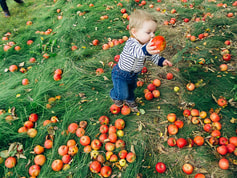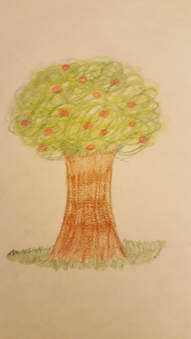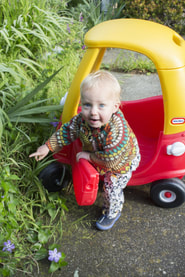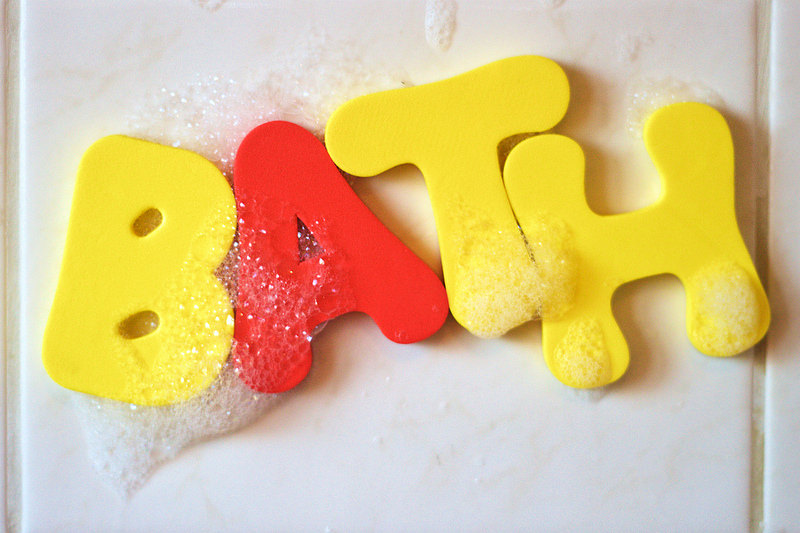Marina Vertleyb
|
Today I want to talk about some ways to help your child begin to talk.
For a child to become an active participant in communication, there must be a need, an opportunity, and a reward for their efforts. Creating a reason to communicate is one of the most important things we can do to help children develop communication skills. In other words, we DO NOT have to anticipate their needs! I know, it sounds harsh, but think about it… By not anticipating, we give a child an opportunity to show and tell us what he or she wants or needs. When a desire is fulfilled, this is rewarding for a child, and there is a great chance that he or she will try the communication method again. Creating Communicative Temptations (this term was formalized by Wetherby & Prizant in 1989) is one way to create a need for communication. This is exactly what it sounds like: setting up the environment in such a way as to tempt a child to communicate with us. Here are some ways to tempt your child to request:
Here is an example:
- Give him what he wants -and cheer him on!
Here is another one:
-Wait for her response just a bit before giving her the treat. -Cheer her on! A model you are going to provide for your child depends on his or her level.
Do not get discouraged if he or she does not repeat on your first attempt to implement communicative temptations. Be persistent and it will work. Here are a few more ideas (from http://childdevelopmentprograms.ca/elearning-modules/the-power-of-play/story_content/external_files/Communication%20Temptation%20Ideas.pdf):
Remember, you are not being mean! You are creating the environment for your child to become an excellent communicator!
0 Comments
Going apple picking this weekend? With the apple picking season upon us, why not use this opportunity to enrich and develop your child’s language? These are ten things I came up with. Feel free to share yours! 1. Who can come up with most words to describe apples? Red, smooth, juicy, round, smooth, tart, crunchy, cold, rotten… you got the idea. 2. What can we do with an apple? Eat, slice, peel, core, bake, pick, bite, chew… 3. Where do apples grow? On the apple tree! Talk about parts of the tree: trunk, branches, leaves, roots, bark. Find these parts on different trees. 4. What parts does an apple have? Skin, core, seeds, stem, flesh. Which part do we eat? Or don’t? 5. You can talk about apples that grow high or low on a tree, or fell on the ground, or grow near/far from the trunk. 6. Talk about what food you can make with apples: apple pie, apple sauce, caramel apples, apple juice. Did I miss something? 7. If you decide to actually make a recipe, this is an excellent opportunity -to discuss what ingredients and equipment you need to make it -to talk about HOW you will make it (what the steps are) -to help your child recall and describe the steps after you are done - to enjoy the shack 8. Count the apples. Who has more? Less? 9. Find the biggest/smallest one. Compare the apples: big-bigger-the biggest, small-smaller-the smallest. 10. Don’t forget to talk about the hay ride, lots of vocabulary there too. As always, if you have questions or concerns about your child's speech, language, play, or communication, talk to the speech therapist www.slp4u.com/contact.html My friends with young children often ask me to listen to their kids’ speech: “Anna doesn’t say /r/”, “Matthew says “top” instead of “stop”. Is it time to see a speech therapist?”
Today, let’s talk about speech and sound development. As very young children learn to speak, they simplify the adult speech. They do this because their young brains, lips, and tongues are not mature enough to process and produce adult-sounding speech. They just cannot put correct sounds in correct places in words and sentences yet. Most of the times the mistakes in the young children’s’ speech are not random and follow the certain predictable patterns, which are called Phonological Processes. All kids use phonological processes as they begin to speak. When your toddler says “tup” instead of “cup”, she is using a phonological process of fronting, when a child says “cap” instead of “clap”, he is using cluster reduction, and when you hear “too” instead of “shoe”, you hear stopping. As children mature, their mastery of language increases, phonological processes gradually disappear, and the young child’s speech becomes clearer and more adult-like. Many of the phonological processes disappear by the age of three, and all of them are expected to resolve by the age of 5. A typically developing 4-year-old is fully intelligible, but still makes some speech sound errors. Here is a guide to speech intelligibility (how clear a child’s speech is to others):
Here are some (but not all) examples of phonological processes and ages by which they are expected to be eliminated: Disappearing by the age of 3: Unstressed syllable deletion is omitting a weak syllable (banana = nana) Final consonant deletion is omitting a consonant at the end of a word (Cat=ca) Fronting is substituting a front sound for a back sound (Can = tan) Reduplication is repeating phonemes or syllables (Water = wawa) Disappearing after the age of 3: Cluster reduction is omitting one or more consonants in a sequence of consonants (Clean = keen) Gliding is substituting /w/ or /j/ for another consonant (Run=wun, Lego=yego) Stopping is substituting a stop consonant for a fricative, liquid, nasal, or glide (Zoo = doo, chair = tair, shoe = too) For a complete list of the phonological processes, their descriptions, and ages by which they should disappear go to http://www.speech-language-therapy.com/index.php?option=com_content&view=article&id=31:table3&catid=11:admin&Itemid=117 Here is a quick look at sounds and ages at which 85% of the kids master them. Note that many children may and will learn to produce these sounds correctly earlier. (This information is adapted from Goldman-Fristoe Test of Articulation, 2-nd edition) 2 years old: Beginning of the words: b, d, h, m, n, p, Middle: b, m, n End: m, p 3 years old: Beginning of the words: f, g, k, t, w Middle: f, g, k, ng, p, t, End: b, d, g, k, n, t 4 years old: Beginning of the words: kw Middle: d End: f 5 years old: Beginning of the words: ch, dz, ts, sh, j, bl Middle: ch, dz, ts, sh, j, bl End: l, ng, ch, s, sh, dz, r, v, z 6 years old: Beginning of the words: r, v, most consonant clusters such as br (break), fl (fly) and others Middle: r, v End: 7 years old: Beginning of the words: th Middle: th End: th Talk to a speech-language pathologist if your toddler
For more about speech sound development, go to: http://teachmetotalk.com/2009/08/31/speech-sound-development/ If you are concerned about your child’s speech and language development, talk with a speech-language pathologist: http://www.slp4u.com/contact.html Bath time is an excellent time to connect with your child and to enrich and encourage your child’s language development. It is repetitive and familiar, so you can discuss the steps: “First we poor water in the tub, then we take the clothes off, then get into the tub, etc”. Talk about all actions you are doing and ask your child what happens next.
Many parents use bath time to read books and sing songs with their children. Here are some more things you can do to make bath time even more fun. (Think about all the wonderful words you can teach your child while playing): 1. Wash a baby doll. The doll may happen to have dirty hands, nose, tummy, back, toes, etc. You could wash the doll using soap, shampoo, washcloth. Rinse it with water, poor water over the doll, dry with the towel. And now your baby doll has clean toes, fingers, hair, knees, elbows, eyes 2. Play with the wash cloth. Wash it, twist it, watch the water drip, wring it, squeeze it, pull it. Hide your face behind it and play peek-a-boo. Hide the little toys under/inside it. Use it to wash the toys 3. You could poor water in/out of cups and containers of different sizes and colors. The cups will be dry/wet, empty/full, have more/less/some water 4. Toy fish could swim in/out of the cups, splash, jump high/low, in/out of the water, swim up/down, side to side, backwards and forward, fast and slow 5. Other animals could also jump and splash in the water. You could catch them with the net, put them in a toy boat, count, wash, and hide in the soap bubbles. What games do you play with your child during bath time? |




